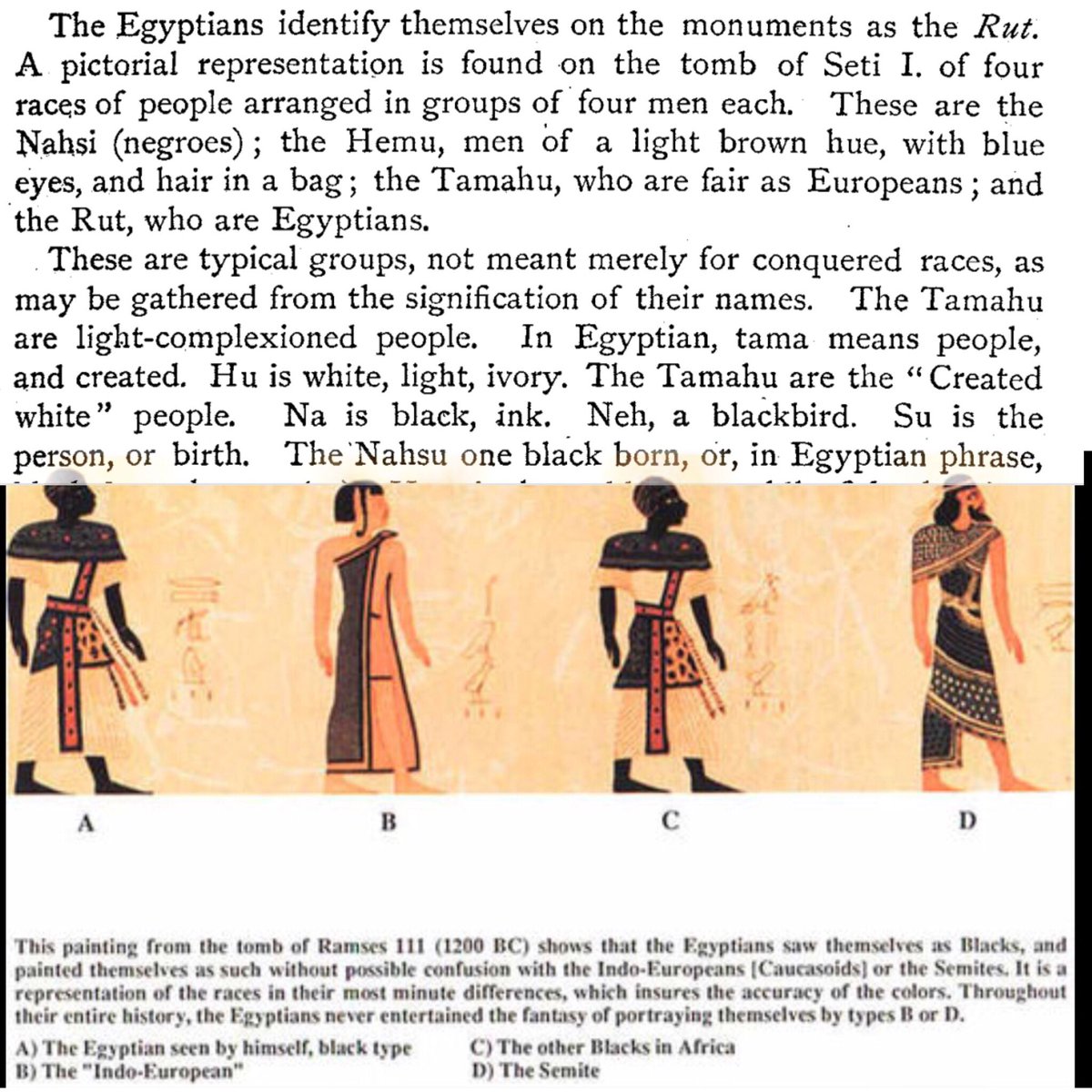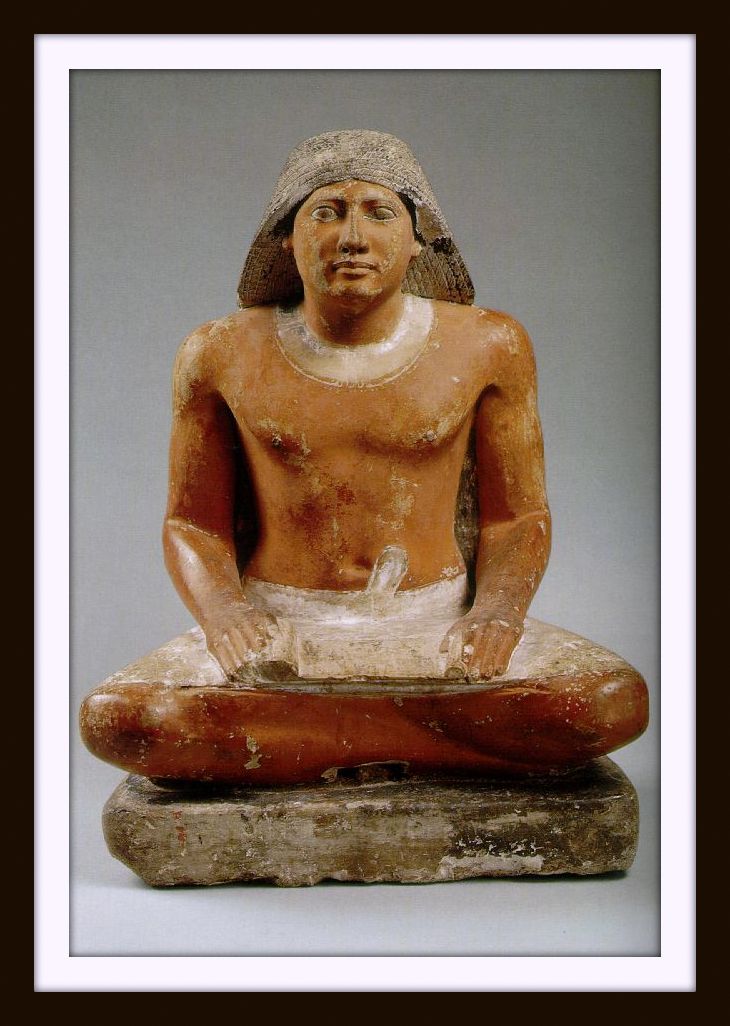Francis Champollion was the scholar credited with deciphering the hieroglyphs (Medu Netar which meaning language of the Gods) with the Rosetta Stone. The information that he was said to have unraveled about the origins and true history of the "Tamahu" (which literally translate into the words "created White people") devastated him and he wrote about what he found in the letter to his brother below.
Champollion affirmed this in his letter to his brother and wrote:
"...Right in the valley of Biban-el-Moluk we admired, like all previous visitors, the astonishing freshness of the paintings and the fine sculptures on several tombs. I had a copy made of the peoples represented on the bas-reliefs. At first I had thought from the copies of these bas-reliefs published in England, that these peoples of different races led by the god Horus holding his shepherd's staff, were indeed nations subject to the rule of the Pharaohs. A study of the legends informed me that this tableau has a more general meaning. It portrays the third hour of the day, when the sun is beginning to turn on its burning rays, warming all the inhabited countries of our hemisphere. According to the legend itself, they wished to represent the inhabitants of Egypt and those of foreign lands. Thus we have before our eyes the image of the various races of man known to the Egyptians.
And we learn at the same time the great geographical or ethnographica divisions established during that early epoch. Men led by Horus, the shepherd of the peoples, belong to four distinct families. The first, the one closest to the god, has a dark red colour, a well-proportioned body, kind face, nose slightly aquiline, long braided hair, and is dressed in white. The legends designate this species as Rt-en-ne-Rme, the race of men par excellence i.e. the Egyptians.
They can be no uncertainty about the racial identity of the man who comes next: he belongs to the Black race, designated under the general term, Nahasi. The third presents a very different aspect; his skin colour borders on yellow or tan, he has a strongly aquiline nose, thick, black pointed beard and wears a short garment of varied colours; these are called, Namou.
Finally, the last one is what we call flesh-coloured, a white skin of the most delicate shade, a nose straight or slightly arched, blue eyes, blond or reddish beard, tall stature and very slender clad in a hairy ox-skin, a veritable savage tattooed [see my article on European Goths] on various parts of his body, he is called, Tamahou.
I hasten to seek the tableau corresponding to this one in the other royal tombs and, as a matter of fact, I found it in several. The variations I observed fully convinced me that they had tried to represent here the inhabitants of the four corners of the earth, according to the Egyptian system, namely;
The inhabitants of Egypt which, by itself formed one part of the world
The inhabitants of Africa proper: Blacks
Asians
Finally [and I am ashamed to say so, since our race is the last and the most savage in the series]. Europeans who, in those remote epochs, frankly did not cut too fine a figure in the world.
In this category we must include all blonds and white-skinned people living not only in Europe, but Asia as well, their starting point. This manner of viewing the tableau is all the more accurate because, on the other tombs, the same generic names appear, always in the same order. We find there, Egyptians and Africans represented in the same way, which could not be otherwise; but the Namou [the Asians] and the Tamahou [Europeans] present significant and curious variants. Instead of the Arab or the Jew, dressed simply and represented on one tomb, Asian's representatives on other tombs [those of Ramases 11 ect] are three individuals, tanned complexion, aquiline nose, black eyes, and thick beard but clad in rare splendour.
In one, they are evidently Assyrians, their costume, down to the smallest detail, is identical with that of personages engraved on Assyrian cylinders. In the other, are Medes or early inhabitants of some part of Persia. Their physiognomy and dress resemble, feature for feature, those found on monuments called, Persepolitan. Thus, Asia was represented indiscriminately by any one of the peoples who inhabited it.
The same is true of our good old ancestors, the Tamahou. Their attire is sometimes different; their heads are more or less hairy and adorned with various ornaments; their savage dress varies somewhat in form, but their white complexion, their eyes and beard all preserve the character of a race apart. I had this strange ethnographical series copied and coloured. I certainly did not expect, on arriving at Biban-el-Moluk, to find sculptures that could serve as vignettes for the history of the primitive Europeans, if ever one has the courage to attempt it, nevertheless, there is something flattering and consoling in seeming them, since they make us appreciate the progress we have subsequently achieved..."
- Champollion




 What madness
What madness






